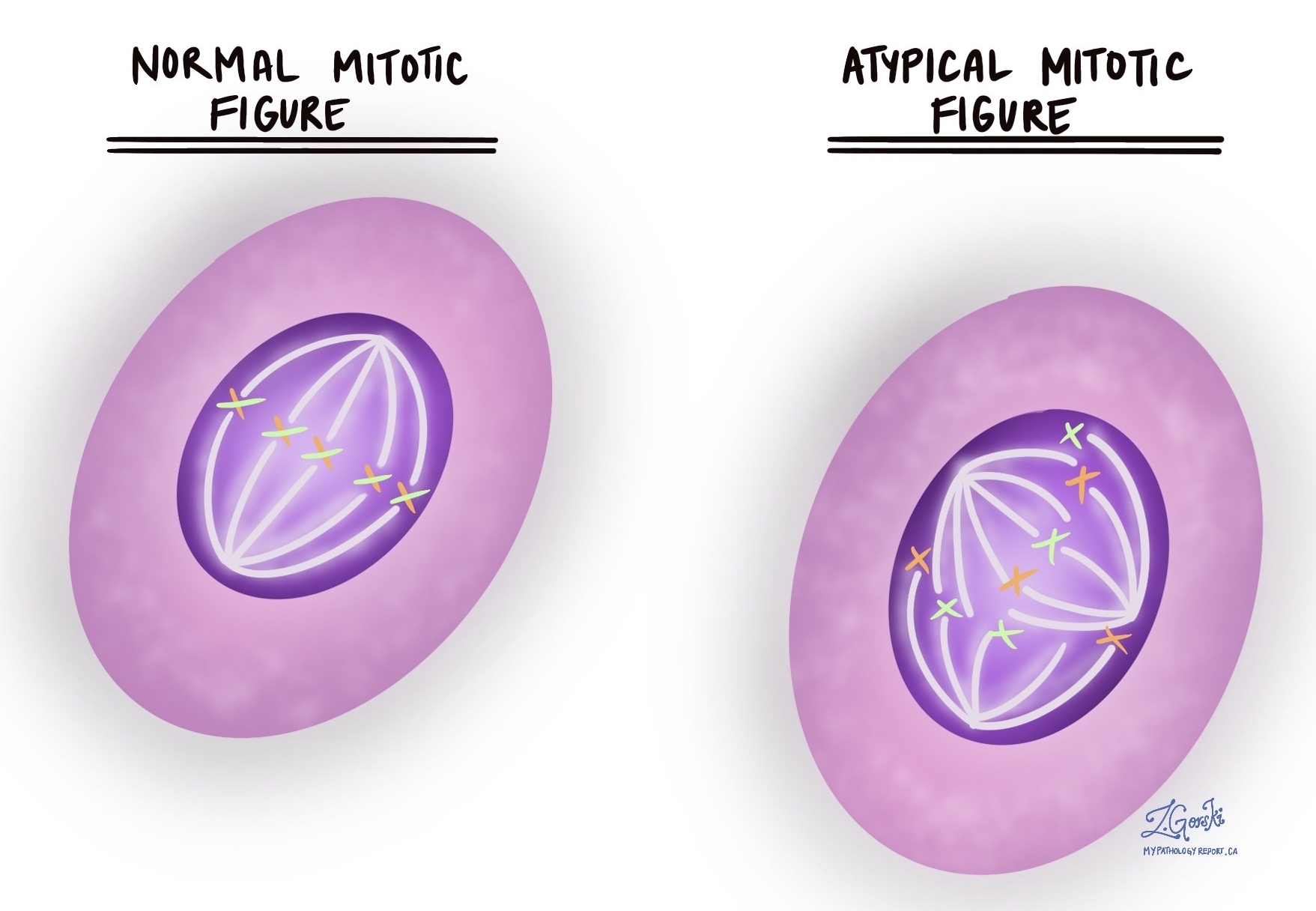An atypical mitotic figure is an abnormal pattern of cell division seen when cells split into two new cells. Normally, cells divide evenly through a process called mitosis, ensuring each new cell receives an equal amount of genetic material (DNA). However, sometimes mistakes occur, causing the cells to divide incorrectly and resulting in uneven or abnormal distribution of DNA. Pathologists call these mistakes “atypical mitotic figures.”
Why are atypical mitotic figures important?
Identifying atypical mitotic figures is important because they typically indicate that cells are not dividing properly and may be part of a disease process. Pathologists look for these abnormal cells when examining tissue samples under a microscope because their presence can help identify and diagnose cancer. Atypical mitotic figures often suggest that the tissue is growing in an uncontrolled and abnormal manner, which is characteristic of cancer.
Where are atypical mitotic figures commonly found?
Atypical mitotic figures are most commonly seen in various types of cancer, including breast cancer, lung cancer, colon cancer, and melanoma. They are usually absent in healthy tissue. However, they can occasionally appear in tissues damaged by radiation therapy or other types of injury, although this is rare.
Do atypical mitotic figures always mean cancer?
The presence of atypical mitotic figures strongly suggests cancer, but their occurrence alone does not automatically mean cancer is present. While atypical mitotic figures usually indicate uncontrolled and abnormal growth, pathologists consider these findings together with other microscopic features and additional tests before making a definitive cancer diagnosis.
What tests do pathologists perform if atypical mitotic figures are found?
When atypical mitotic figures are identified, pathologists often perform additional tests, such as immunohistochemistry (IHC), to better understand the abnormal cells and to help confirm or rule out cancer. Immunohistochemistry uses special markers to highlight certain proteins in the cells, allowing pathologists to identify the specific type and origin of the abnormal growth.
How does the finding of atypical mitotic figures affect treatment?
If atypical mitotic figures indicate cancer, the treatment will depend on several factors, including the type and stage of cancer, its location, and the patient’s overall health. Doctors may recommend treatments such as surgery, chemotherapy, radiation therapy, or targeted therapies. Detecting atypical mitotic figures early helps ensure timely diagnosis and appropriate treatment planning.




